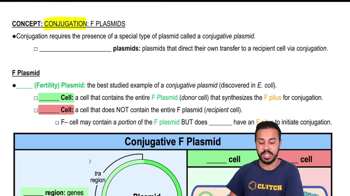A friend tells you that the theory of evolution is just an educated guess by biologists about how things work. Evaluate this statement.
Galpayage and co-workers disinfected the wooden balls after each experiment. If they had not included this step, how might this have impacted their interpretation of the data?
 Verified step by step guidance
Verified step by step guidance
Verified video answer for a similar problem:
Key Concepts
Contamination

Experimental Control

Data Integrity

Some humans have genes that make them resistant to infection by HIV. Would human populations likely evolve differently in areas of the world where HIV infection rates are high? Explain your logic.
While working on her PhD, behavioral ecologist Samadi Galpayage led a landmark study that reached an unexpected conclusion—bumble bees roll wooden balls “just for fun.” Galpayage and co-workers hypothesized that similar to other animals that play, young bumble bees would play more than older bumble bees. In their experimental setup, a nest box containing a bumble bee colony was connected via a plastic tunnel to an unobstructed path that led to a foraging area that contained a food reward (sucrose and pollen). There were nine mobile, inedible wooden balls on the right of the unobstructed path and nine immobile, inedible balls on the left, so the bumble bees had to take a detour to get to the balls. Results of a study of younger bees (3 days old) and older bees (10 days old) are shown in the following box-and-whisker plot (see BioSkills 2). Eleven out of 13 younger bees rolled balls, and 14 out of 33 older bees rolled balls. For the bees that rolled balls, the number of ball rolling actions was measured. Use the P value provided to determine if the differences are significant or not (*means 𝑃<0.05, see BioSkills 3). What conclusion, if any, can be drawn about bumble bee ball rolling from this study? What might the researchers do next to further explore the role of play in bumble bees?
Researchers developed a model to predict the effect of “business-as-usual” CO2 emissions on our oceans by the end of this century. Conditions based on this business-as-usual model were used to evaluate the net ecosystem calcification (production of calcium carbonate) in seawater tanks containing representative communities to replicate the southern Great Barrier Reef. What variables were likely altered in this experiment to estimate the conditions of the year 2100?
